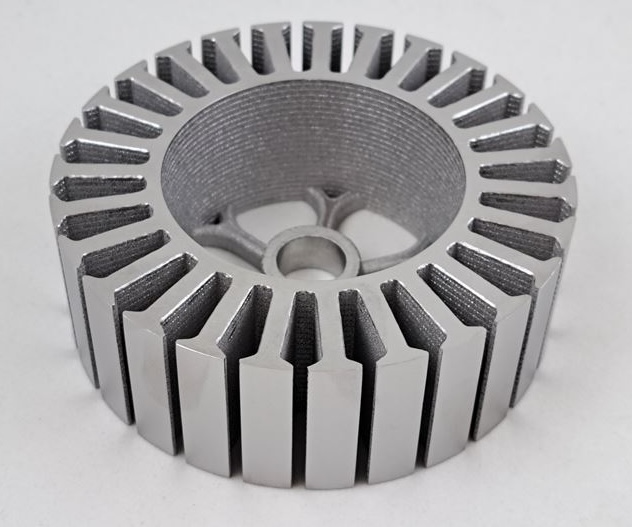Today’s electrical motors are generally made by cutting and moulding pieces from a metal sheet. 3D printing can radically increase efficiency and reduce material consumption. 3D printing larger motor parts has proven difficult, however, as the parts become too brittle and may easily break. Through an EU-funded project together with research- and customer partners, Elkem has developed a new specialized iron silicon powder, which may allow 3D-printing of components for electrical motors.
In the SOMA project (Lightweight solutions for e-mobility by AM for soft magnetic alloys), Elkem together with the project partners VTT (coordinator), Siemens, Stellantis and Gemmate Technologies have developed powder for use in 3D printing.
The powder is soft magnetic, meaning that it is easy to magnetize and de-magnetize, which is important in electrical motors. It is produced in a small-scale pilot atomizer, located in Kristiansand at the Future Materials, Norwegian Catapult Centre. The powder has been used to 3D-print components for evaluation of the quality and manufacturing of demo devices. The 3D printing and part qualification has been done at VTT in Finland and Siemens in Germany.
“This is a project with potential to transform motor parts manufacturing. We have successfully created a new specialised powder with good printability based on silicon-steel (with additives). 3D-printed components show enhanced ductility and competitive magnetic properties”, says Tomi Lindroos at VTT.
The final use-case was to produce a motor for an electric scooter. The use-case was supported by modeling carried out by Gemmate-Technologies and VTT giving more novel design opportunities for electrical motor components. “The powder developed in the SOMA project will now be introduced to the market by Elkem for evaluating the product for future commercial production. The product is currently available in small test volumes”, says Jan Ove Odden, Project leader at Elkem
The 3-year project, which started 01.01.2021, was supported by EIT Raw Materials, funded by the EU with a total project budget of just over €5.6 million.




